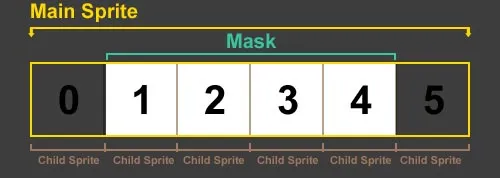如何在Cocos2D中剪裁/裁剪/遮罩或设置CCSprite的帧?
类似于:使用clippingSubviews = TRUE为UIView设置框架
我的CCSprite Main Sprite 有多个Child Sprite添加到其中。 我只想让该主要的Sprite的部分Mask可见。是否有一种方法可以剪切或使用蒙版来处理CCSprite?
我可以切掉背景,将其放在顶部,仅留下该可见区域,但那是唯一的方法吗?!
以下是演示我想实现的示例图像:

(来源:dnamique.com)
如何在Cocos2D中剪裁/裁剪/遮罩或设置CCSprite的帧?
类似于:使用clippingSubviews = TRUE为UIView设置框架
我的CCSprite Main Sprite 有多个Child Sprite添加到其中。 我只想让该主要的Sprite的部分Mask可见。是否有一种方法可以剪切或使用蒙版来处理CCSprite?
我可以切掉背景,将其放在顶部,仅留下该可见区域,但那是唯一的方法吗?!
以下是演示我想实现的示例图像:

(来源:dnamique.com)
我最终使用了GL_SCISSOR。
在MainSprite中,我实现了:
- (void) visit
{
if (!self.visible) {
return;
}
glEnable(GL_SCISSOR_TEST);
glScissor(x, y, width, height);
[super visit];
glDisable(GL_SCISSOR_TEST);
}
这将截取或遮罩指定的区域。
唯一棘手的部分是,在横屏模式下,Cocos2D的0,0位于屏幕的左下角,而OpenGL将其视为屏幕右下角,因为它不考虑屏幕的方向。
换句话说,对于OpenGL来说,您需要考虑一个旋转的纵向屏幕。
我尝试使用Steffen Itterheim的ClippingNode,但无法以足够健壮的方式满足我的需求。
信不信由你,下面的代码表现相当不错,应该是完整的代码。它处理设备方向变化、锚点、位置、缩放(scaleX、scaleY)。对于cocos2d v2,您可能只需要注释掉glPushMatrix和glPopMatrix调用。
使用时,只需设置position和contentSize属性并将子项添加到此ClippingNode实例中即可。contentSize属性用于定义剪切区域的尺寸。
example of usage:
ClippingNode *clipNode = [[ClippingNode alloc] init];
clipNode.anchorPoint = ccp(0.5f, 0);
clipNode.position = ccp(100, 25);
clipNode.contentSize = CGSizeMake(120, 120);
// add clipNode to your node hierarchy.
[parentNode addChild:clipNode];
// add one or more children to your clipNode:
[clipNode addChild:child1];
// ClippingNode.h
// CC0 - (public domain. Use in anyway you see fit.)
// No warranty of any kind is expressed or implied.
//
// by UChin Kim.
//
// the caller can simply set the regular cocos2d
// properties: position and contentSize to define the clipping region implicitly (i.e. the
// position and contentSize of the ClippingNode is the clipping region to be used).
// as an added bonus, position seems to work as expected (relative to parent node, instead of
// requiring absolute positioning).
//
// also, anchorPoint and scale properties seem to work as expected as well..
// no special code is neeed to handle device orientation changes correctly..
//
// To visually see exactly what is being clipped, set the following #define
// #define SHOW_CLIPPED_REGION_IN_LIGHT_RED 1
//
#import "cocos2d.h"
@interface ClippingNode : CCNode
@end
//
// ClippingNode.m
//
#import "ClippingNode.h"
@implementation ClippingNode
-(void) visit
{
CGPoint worldOrg = [self convertToWorldSpace:ccp(0, 0)];
CGPoint dest = [self convertToWorldSpace:ccp(self.contentSize.width, self.contentSize.height)];
CGPoint dims = ccpSub(dest, worldOrg);
glPushMatrix();
glEnable(GL_SCISSOR_TEST);
glScissor(worldOrg.x, worldOrg.y, dims.x, dims.y);
#if SHOW_CLIPPED_REGION_IN_LIGHT_RED
glColor4ub(64, 0, 0, 128);
ccDrawSolidRect(ccp(0, 0), ccp(1024, 1024));
#endif
[super visit];
glDisable(GL_SCISSOR_TEST);
glPopMatrix();
}
@end
CCDirector::sharedDirector()->pushScene( CCTransitionSlideInL::create( 10.0f, pScene ) );进行过渡时如何获取精灵变换吗?谢谢! - Zennichimaro